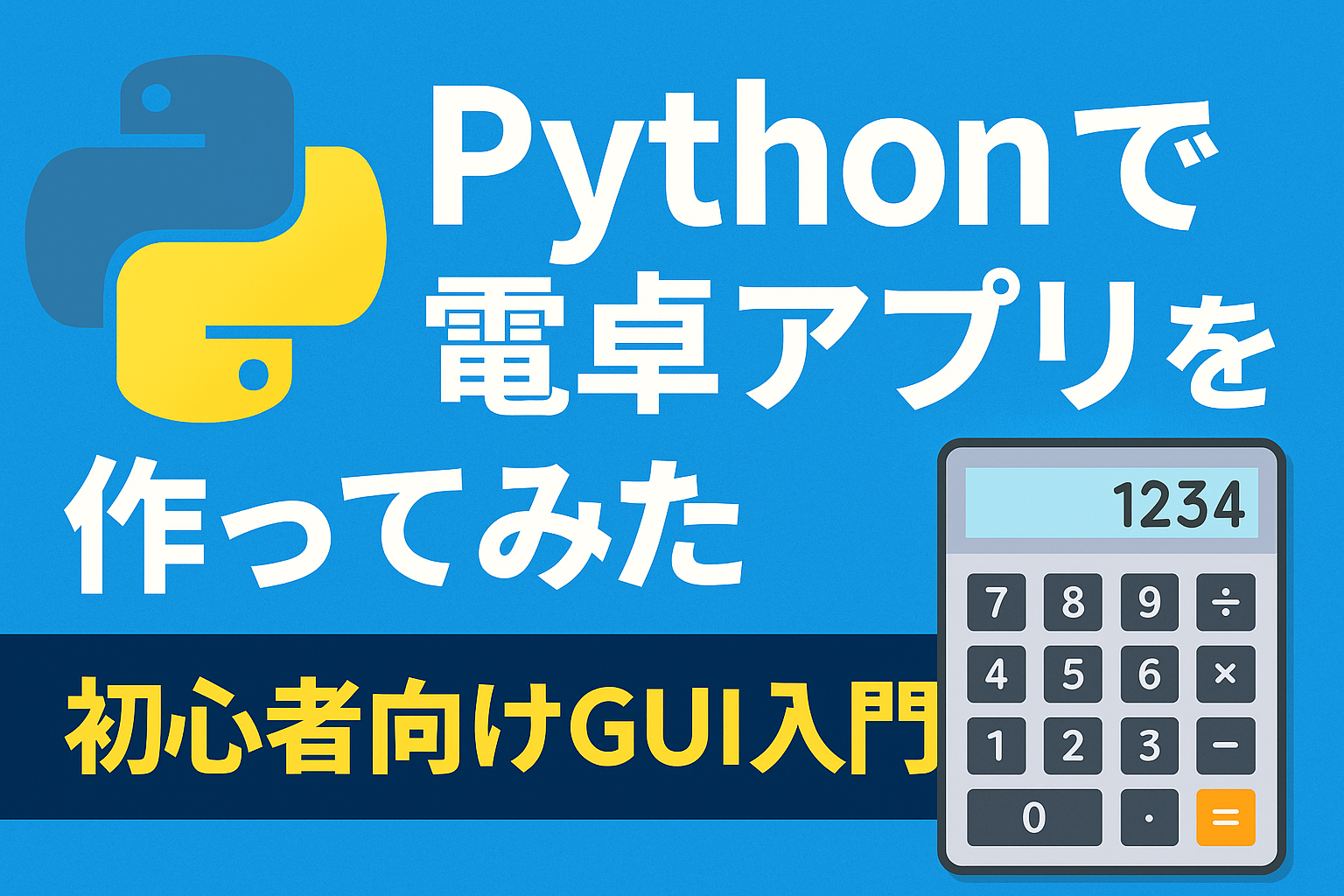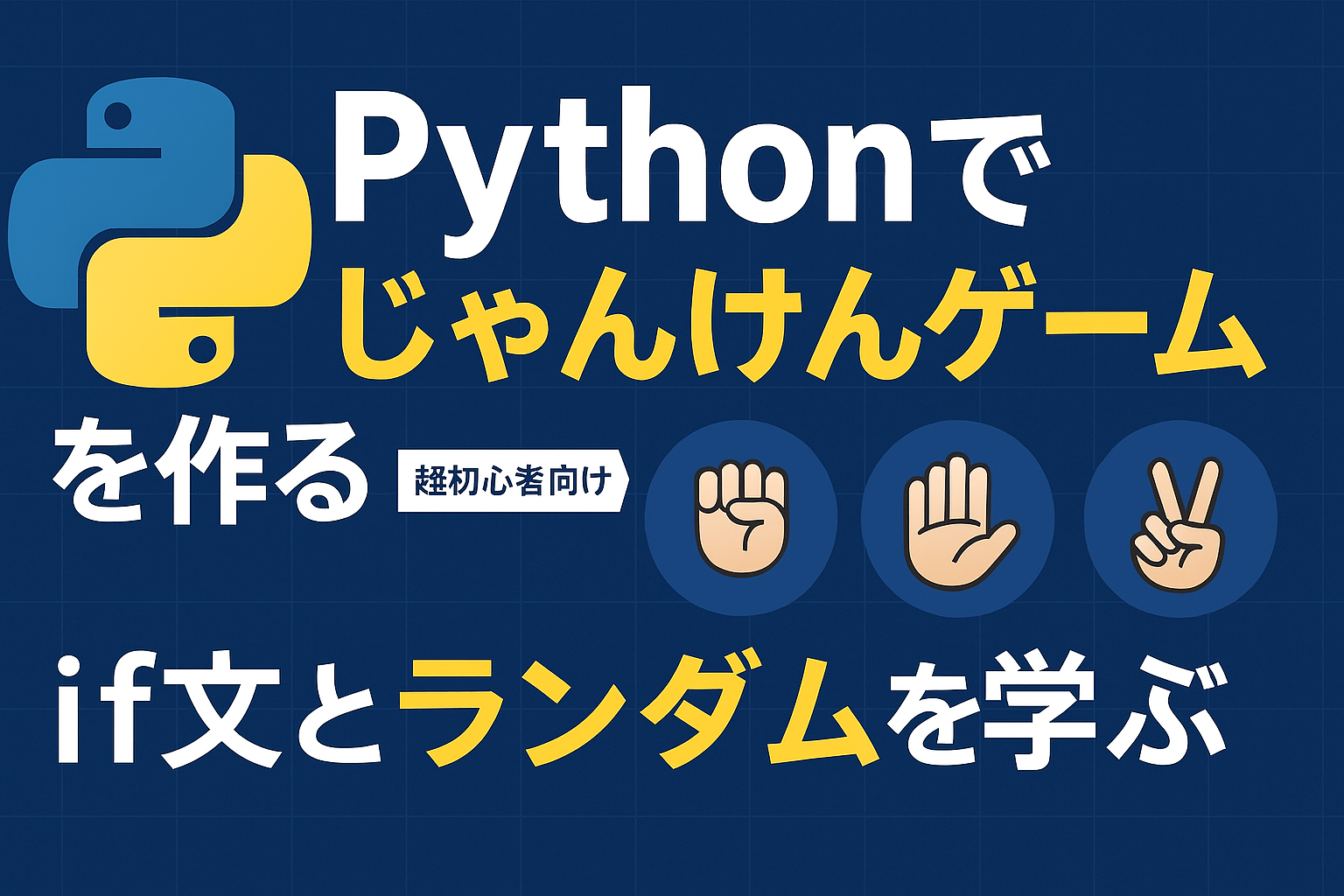"I just started using Python and I don't know what to make."
For such beginners, we recommendCreating your own calculator appis.
In this article, we will explain how to use Python so that even beginners can feel at ease.How to make a GUI calculator with codeWe will explain in detail. We use the standard library "tkinter". No additional installation is required, and the appeal is that you can easily create GUIs.
By reading this article,Python basics, GUI structure, and event processing conceptsYou can learn all at once!
Why build a calculator app with Python?
conclusion
A calculator app is a great way for beginners to learn the basics of Python and GUI.
reason
The calculator is simple to use,Basic calculation processing, button processing, screen displayIt's all packed in.
While experiencing the "fun of making and moving"How to use variables, define functions, and place GUI componentsYou can learn up to.
Examples
• Learn how to use "Label Entry" to display numbers in a GUI
• Practice implementing arithmetic logic in Python
• It's practical, so it's easy to feel a sense of accomplishment.
reassertion
The calculator app is a great choice for your first Python GUI project.
Preparation for creating GUI with tkinter
conclusion
Python includes the GUI library "tkinter" as standard, so you can get started right away.
procedure
1. If you don't have Python installed, official website (https://www.python.org) to download the latest version.
2. Prepare an editor (VSCode, PyCharm, etc.).
3. Check that tkinter is working as shown below.
import tkinter as tk root = tk.Tk() root.title("Test") root.mainloop()
If a small window appears on the screen, it's successful.
reassertion
The appeal of tkinter is that it doesn't require any environment setup and allows you to try out GUI right away.
Let's understand the basic structure of a calculator app
conclusion
A calculator app consists of three elements: the display area, buttons, and calculation processing.
point
• Display area (Entry): Display input and results
• Button: The part where you press numbers, operators, clear, etc.
• Arithmetic processing (functions): Performs processing according to the button
Simple configuration diagram
+----------------+ | Entry | +----------------+ | 7 | 8 | 9 | / | | 4 | 5 | 6 | * | | 1 | 2 | 3 | - | | 0 | C | = | + |
reassertion
Understanding the roles of each part is the shortcut to completion.
Let's actually write the code and run it
conclusion
A basic calculator app can be implemented in about 50 lines of code.
Code example (partial excerpt)
import tkinter as tk def click(event): btn_text = event.widget["text"] if btn_text == "=": try: result = str(eval(entry.get())) entry.delete(0, tk.END) entry.insert(tk.END, result) except: entry.delete(0, tk.END) entry.insert(tk.END, "error") elif btn_text == "C": entry.delete(0, tk.END) else: entry.insert(tk.END, btn_text) root = tk.Tk() root.title("Calculator") entry = tk.Entry(root, width=20, font=("Arial", 20), bd=5) entry.grid(row=0, column=0, columnspan=4) buttons = [ ["7", "8", "9", "/"], ["4", "5", "6", "*"], ["1", "2", "3", "-"], ["0", "C", "=", "+"] ] for i, row in enumerate(buttons): for j, btn_text in enumerate(row): btn = tk.Button(root, text=btn_text, width=5, height=2, font=("Arial", 18)) btn.grid(row=i+1, column=j) btn.bind(" ", click) root.mainloop()
reassertion
With just a little code, you can create an app that looks and works great.
Let's add more useful features
conclusion
Adding functions like a scientific calculator and history saving functionality will allow for even deeper learning.
More ideas
• Added a decimal point (.) button
• Negative numbers and parentheses support
• Display calculation history in a list
• Change theme color
Extended example code (adding decimal points)
# Add "." to button array ["0", ".", "C", "="]
reassertion
Even a simple app can become professional with a little ingenuity.
FAQ
Q1. What should I do if it stops due to an error?
A. You can use the try-except syntax to switch to an error display.
Q2. Is Japanese support available?
A. Yes, you can change the text display to Japanese. Make sure to also specify UTF-8 as the character code.
Q3. Does it work on a smartphone?
A. It is basically designed for PCs, but it can also be made compatible with smartphones by using other libraries such as Kivy.
summary
• The calculator app is a great Python GUI introductory project for beginners.
• tkinter is a standard library that can be used without installation
• Learn all about "input, processing, and output" with minimal code.
• You can improve the level by adding features and changing the design.


